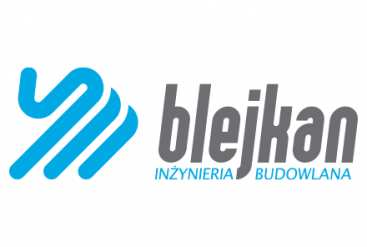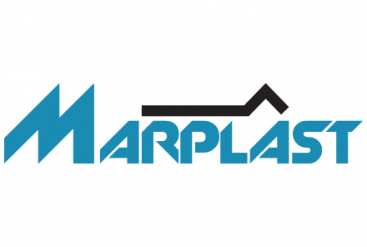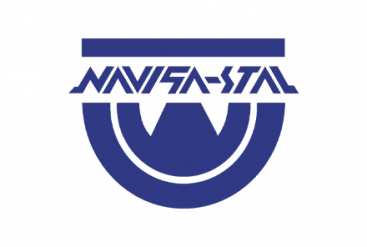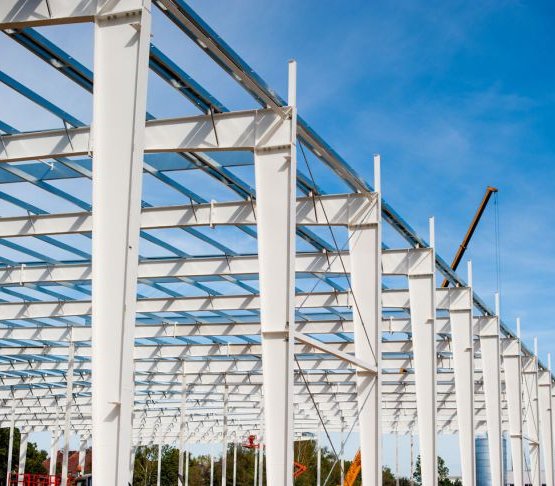Interview with Alessandro Olcese, IATT Vice President and Chairman of the Organizing Committee for Mediterranean No-Dig 2007, XXVth International Conference & Exhibition.
.jpg)
Tell us about your way to achieve your position in IATT.
I have been in IATT since the foundation in 1994 and, as represetative of ENI Company, I have been into the Steering Committee since 1998. After the last IATT election I have been chosen as IATT Vice Chairman, with the special task to organize the International No Dig in Italy, in fact I am the Chairman of the Organizion Committee of "Mediterranean No Dig 2007 XXVth International Conference & Exhibition". That task follows my previous experience as Member of the Steering Committee that organized the 14th No Dig International - 1997 - in Genoa.
Why have you decided to relate with IATT? Was it an accident or you aspired to be a member of IATT?
In 1994 I took part in the International No Dig at Copenhagen and I presented a paper on HDD, a technique that my Company at that time used to apply laying gas pipeline through some river, and I met ISTT world. Together with other Italian participants to that event, we decided it should be interesting that also in Italy an Association for TT were founded to develop the TT knowledge and market. Therefore in December 1994 we founded in Genoa IATT with the agreement of our respective companies.
What was the deciding factor in choosing Rome for the organization of No-Dig 2007?
IATT presented its nomination for No Dig International 2007 in "Bologna", but after the positive decision by ISTT Board it was considered with special care the negative results of previous two No dig events in Europe: it was necessary to change something to invert the negative trend! Therefore we proposed a new style for No Dig: low cost and high quality. To get this target we proposed a new location, more attractive: Rome with a special rate for delegates and exhibitors.
On June 2006 ISTT Board agreed with this project and we began the actual run to win our bet!... Only 14 months to win...!
NO-DIG is not only a fair but also a congress. What are the main topics for the conference? How many lecturers do you expect?
On the basis of 68 papers accepted for the 14 Technical Sessions (see annexed 1) we are waiting for important presentations regarding "Rehabilitation", "Horizontal Directional Drilling", "Microtunnelling" and, generally speaking, for all those arguments relating to water treatment and discharge.
What are your expectations connected with the fair?
At the moment we have a bit more than 2100 m2 of net space sold as exhibition stands.... more than our expectations (in Genoa we had 1580 m2 of net space sold)!
If you compare the latest fair - what positives and negatives do you notice? You are the main organiser of the Mediterranean NO-DIG Roma 2007. What do you especially pay attention to?
The Australian No Dig International followed another style and the participation was very high, but the true comparison could be made between the previous two No Dig International events in Europe and the No Dig 2007 in Rome: I truly believe our edition is a success both for the participation and the economic point of view. I am very proud of it... do you remember our bet.? My main attention was on pushing the stand selling in order to get the balance of event as soon as possible and the results are now the consequence.
How do you evaluate the degree of such an event? What's the influence of the fair for the market of trenchless engineering in Europe and worldwide?
That is a difficult question. I think a better answer could be given by ISTT Board, who know the European and worldwide market better than me.
Could you tell us shortly about business activity of Italian Association for Trenchless Technology? How important is IATT for the industry in the Italian market?
IATT is not directly involved in business activities. Our business activities are only promotion of TT through meetings, special training courses, conferences and so on. However it is now starting an important tool for TT Italian market - the Quality Certification on TT which the firms should have in order to demonstrate to public or private customers their correct application of TT.
What are the most important and interesting projects in trenchless engineering in Italy?
At the moment there are a lot of projects regarding Microtunnelling and HDD, by ENI Companies (for instance the Arno and Ralways crossing by a 480 m curved microtunnel in which 5 gas and oil pipelines will be installed), and there are a lot of public companies that are considering to apply rehabilitation technologies and materials to pipe renovation (sewers, aqueducts and gas pipelines in urban areas).
How does the market of trenchless engineering develop in Italy? Which of those special technologies progress best?
TT's were used by ENI Company (Snam) since 1978 and, in the beginning of 80's, the first river crossing was performed using HDD to lay a gas pipeline (1982 - River Po at "Sermide" crossing with a 20" steel pipe). Telecom Italia, some public companies like Amga - Genova and ENI gave their important support to develop TT in Italy. Now we used to apply many TT and materials connected (for instance PE), but it is still necessary a more knowledge of TT applications by municipality servants to truly improve their use and have a door to door action. Speaking about technology we developed with special care the georadar instruments, because Telecom Italia initiative to promote Italian industry for that kind of investigation system.
How do you assess the developing of trenchless technologies in Europe and worldwide?
As a customer who uses to apply TT (Microtunnlling, HDD, Relining, Georadar and Steel Pipe Inspection by Intelligent Pig) I can see a continuous improvement of techniques and materials and, at least, but not last, lower costs of TT application especially against the traditional technologies. In 1994 laying a pipeline through a river using HDD was more expensive than open cut pipeline laying, nowadays the things are different: an HDD system is cheaper than open cut system to cross river, and if the soil conditions allow it everyone will apply HDD. I believe that this positive trend for TT is not at the final step!
I have been in IATT since the foundation in 1994 and, as represetative of ENI Company, I have been into the Steering Committee since 1998. After the last IATT election I have been chosen as IATT Vice Chairman, with the special task to organize the International No Dig in Italy, in fact I am the Chairman of the Organizion Committee of "Mediterranean No Dig 2007 XXVth International Conference & Exhibition". That task follows my previous experience as Member of the Steering Committee that organized the 14th No Dig International - 1997 - in Genoa.
Why have you decided to relate with IATT? Was it an accident or you aspired to be a member of IATT?
In 1994 I took part in the International No Dig at Copenhagen and I presented a paper on HDD, a technique that my Company at that time used to apply laying gas pipeline through some river, and I met ISTT world. Together with other Italian participants to that event, we decided it should be interesting that also in Italy an Association for TT were founded to develop the TT knowledge and market. Therefore in December 1994 we founded in Genoa IATT with the agreement of our respective companies.
What was the deciding factor in choosing Rome for the organization of No-Dig 2007?
IATT presented its nomination for No Dig International 2007 in "Bologna", but after the positive decision by ISTT Board it was considered with special care the negative results of previous two No dig events in Europe: it was necessary to change something to invert the negative trend! Therefore we proposed a new style for No Dig: low cost and high quality. To get this target we proposed a new location, more attractive: Rome with a special rate for delegates and exhibitors.
On June 2006 ISTT Board agreed with this project and we began the actual run to win our bet!... Only 14 months to win...!
NO-DIG is not only a fair but also a congress. What are the main topics for the conference? How many lecturers do you expect?
On the basis of 68 papers accepted for the 14 Technical Sessions (see annexed 1) we are waiting for important presentations regarding "Rehabilitation", "Horizontal Directional Drilling", "Microtunnelling" and, generally speaking, for all those arguments relating to water treatment and discharge.
What are your expectations connected with the fair?
At the moment we have a bit more than 2100 m2 of net space sold as exhibition stands.... more than our expectations (in Genoa we had 1580 m2 of net space sold)!
If you compare the latest fair - what positives and negatives do you notice? You are the main organiser of the Mediterranean NO-DIG Roma 2007. What do you especially pay attention to?
The Australian No Dig International followed another style and the participation was very high, but the true comparison could be made between the previous two No Dig International events in Europe and the No Dig 2007 in Rome: I truly believe our edition is a success both for the participation and the economic point of view. I am very proud of it... do you remember our bet.? My main attention was on pushing the stand selling in order to get the balance of event as soon as possible and the results are now the consequence.
How do you evaluate the degree of such an event? What's the influence of the fair for the market of trenchless engineering in Europe and worldwide?
That is a difficult question. I think a better answer could be given by ISTT Board, who know the European and worldwide market better than me.
Could you tell us shortly about business activity of Italian Association for Trenchless Technology? How important is IATT for the industry in the Italian market?
IATT is not directly involved in business activities. Our business activities are only promotion of TT through meetings, special training courses, conferences and so on. However it is now starting an important tool for TT Italian market - the Quality Certification on TT which the firms should have in order to demonstrate to public or private customers their correct application of TT.
What are the most important and interesting projects in trenchless engineering in Italy?
At the moment there are a lot of projects regarding Microtunnelling and HDD, by ENI Companies (for instance the Arno and Ralways crossing by a 480 m curved microtunnel in which 5 gas and oil pipelines will be installed), and there are a lot of public companies that are considering to apply rehabilitation technologies and materials to pipe renovation (sewers, aqueducts and gas pipelines in urban areas).
How does the market of trenchless engineering develop in Italy? Which of those special technologies progress best?
TT's were used by ENI Company (Snam) since 1978 and, in the beginning of 80's, the first river crossing was performed using HDD to lay a gas pipeline (1982 - River Po at "Sermide" crossing with a 20" steel pipe). Telecom Italia, some public companies like Amga - Genova and ENI gave their important support to develop TT in Italy. Now we used to apply many TT and materials connected (for instance PE), but it is still necessary a more knowledge of TT applications by municipality servants to truly improve their use and have a door to door action. Speaking about technology we developed with special care the georadar instruments, because Telecom Italia initiative to promote Italian industry for that kind of investigation system.
How do you assess the developing of trenchless technologies in Europe and worldwide?
As a customer who uses to apply TT (Microtunnlling, HDD, Relining, Georadar and Steel Pipe Inspection by Intelligent Pig) I can see a continuous improvement of techniques and materials and, at least, but not last, lower costs of TT application especially against the traditional technologies. In 1994 laying a pipeline through a river using HDD was more expensive than open cut pipeline laying, nowadays the things are different: an HDD system is cheaper than open cut system to cross river, and if the soil conditions allow it everyone will apply HDD. I believe that this positive trend for TT is not at the final step!
Interview by Agata Sumara, Paweł Kośmider

Foto, video, animacje 3D, VR
Twój partner w multimediach.
Sprawdź naszą ofertę!

Powiązane
Aby dodać komentarz musisz być zalogowany. Przejdź do formularza logowania/rejestracji.









![Czasopismo Trenchless Engineering Special Edition [4]](https://inzynieria.com//uploaded/magazines/ib0s4cover_mid(0).jpg)


